According to the complexity of natural systems the user is given an opportunity to not only scan for a single
mineral or ligand but to assemble a SCM data set for all combinations of a list of chosen minerals and a list
of chosen ligands. In subsequent steps after screening the overall available data records, an SCM sub-model
must be selected to enforce at least a minimum degree of internal data consistency, and the data set can then
be further refined. The definition and selection of the data collection must exactly follow the given order.
As long as a previous step is not accomplished no further buttons will appear in the menu, see Fig. 1.
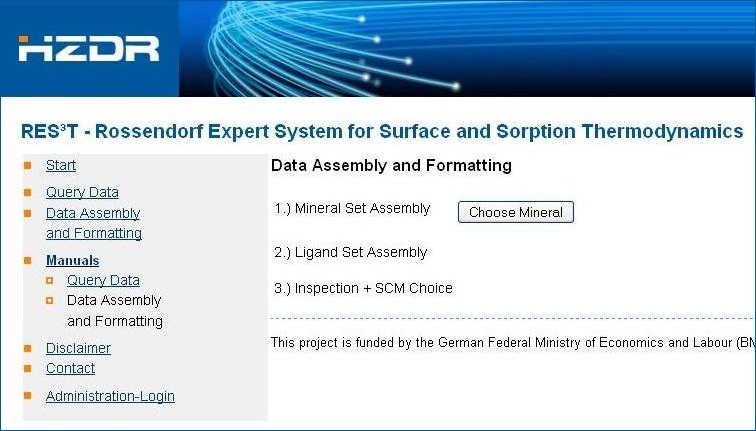
Fig. 1: Data Assembly & Formatting menu of the RES³T database
Mineral Set Assembly
An alphabetically sorted list of all minerals is presented, where the user can make multiple selections through
the check boxes on the left side of the mineral names. Here the iron containing minerals ferrihydrite, goethite,
hematite are selected, see Fig. 2.
There are three buttons below the table that either deselect all, select all or select the chosen entries. When
all desired minerals are selected, the "Select" button must be pushed to advance to the next step in the "Data
Assembly & Formatting" menu.
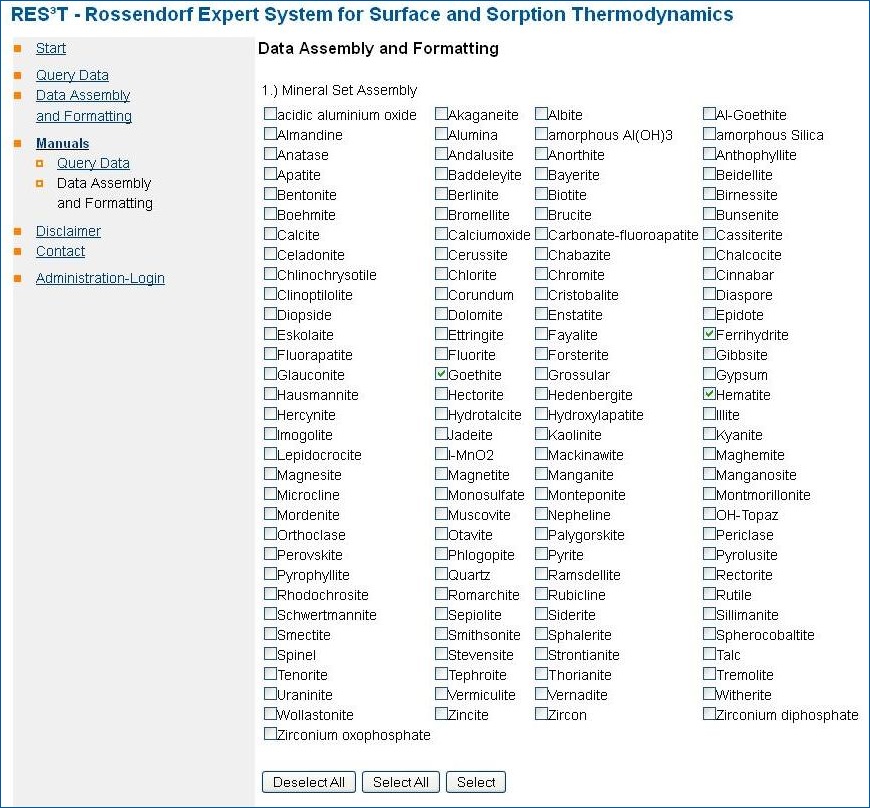
Fig. 2: Selection of minerals
Ligand Set Assembly
An alphabetically sorted list of all ligands is presented, where the user can make multiple selections through
the check boxes on the left side of the ligand names. As an example the heavy metals cadmium, cobalt, copper,
nickel, lead and zinc were selected as sorbing contaminants, see Fig. 3.
There are three buttons below the table that either deselect all, select all or select the chosen entries. When
all desired ligands are selected, the "Select" button must be pushed to advance to the next step in the "Data
Assembly & Formatting" menu.
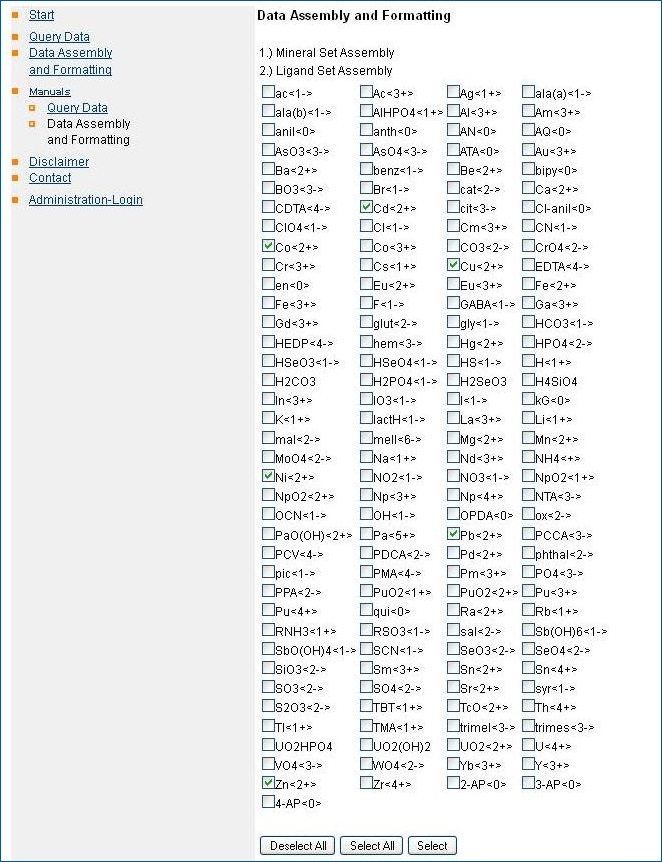
Fig. 3: Selection of ligands
Inspection & SCM Choice:
This form lists all relevant data records based on the user selections for minerals and ligands. The first column
on the left specifies the applied SCM sub-model, then the mineral follows. For each surface complex formation data
record also the associated experimental specific surface area and site densities are given. Then three columns
follow given the protolysis constants and the complex formation constant, all normalized to the standard site
density of 2.31 sites/nm². The next fields give the chemical reaction
and the literature reference. The results are sorted by SCM type, literature reference code, and mineral name,
see Fig. 4.
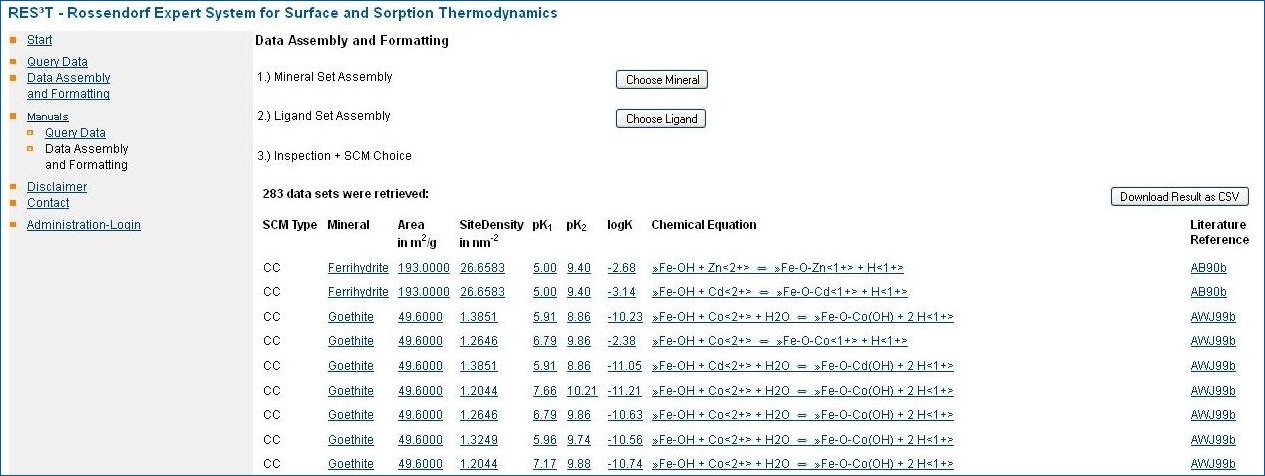
Fig. 4: Global overview and data collection
Finally, the user then has to decide which SCM sub-model the assembled data set should be based on. This may of
course drastically reduce the number of data records but is a requirement for an internally consistent data
collection. The SCM is to be selected from the scroll list at the bottom of the form, then the "Select SCM" button
can be pressed, see Fig. 5.
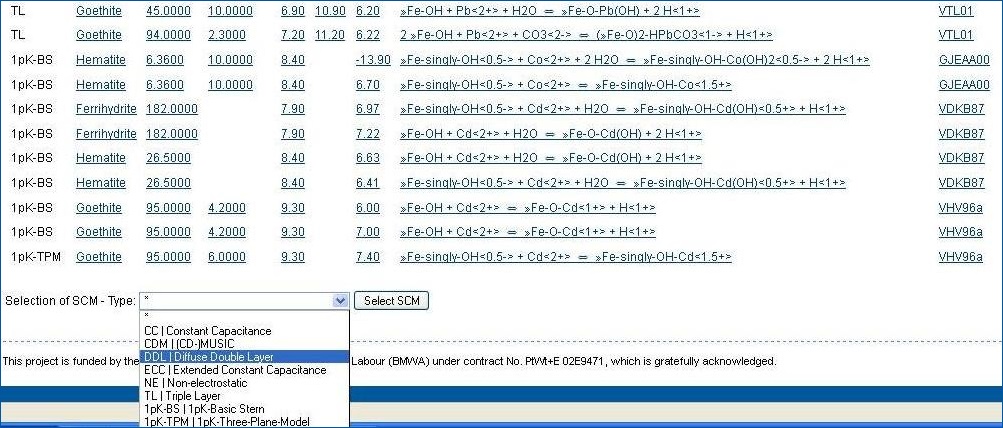
Fig. 5: Global overview and data collection, SCM selection
Final Data Selection
Based on the above made user decisions (as an example the NE model was selected) the remaining set of data
records is shown, with the following fields (from left to right): mineral, specific surface area, site density,
protolysis constants, chemical equation (delivering also information about the ligand), surface complex
formation constant, and literature reference. The table is sorted by literature reference code and mineral
name, see Fig. 6. All constants are normalized to the reference site density.
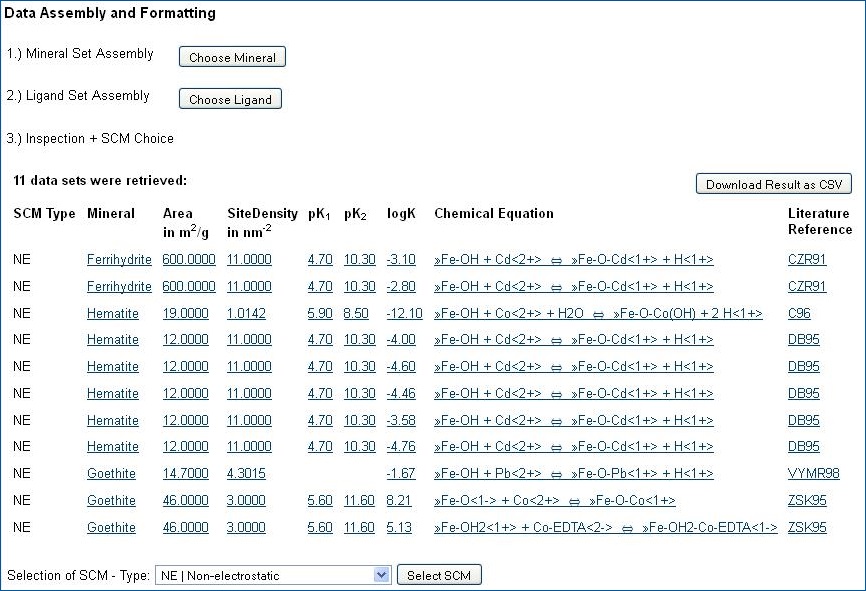
Fig. 6: Final data selection
By pressing the button on the right above the literature references the results can be downloaded as a CSV file.
Hyperlinks on each of the search results allow checking all information available for this specific data record.